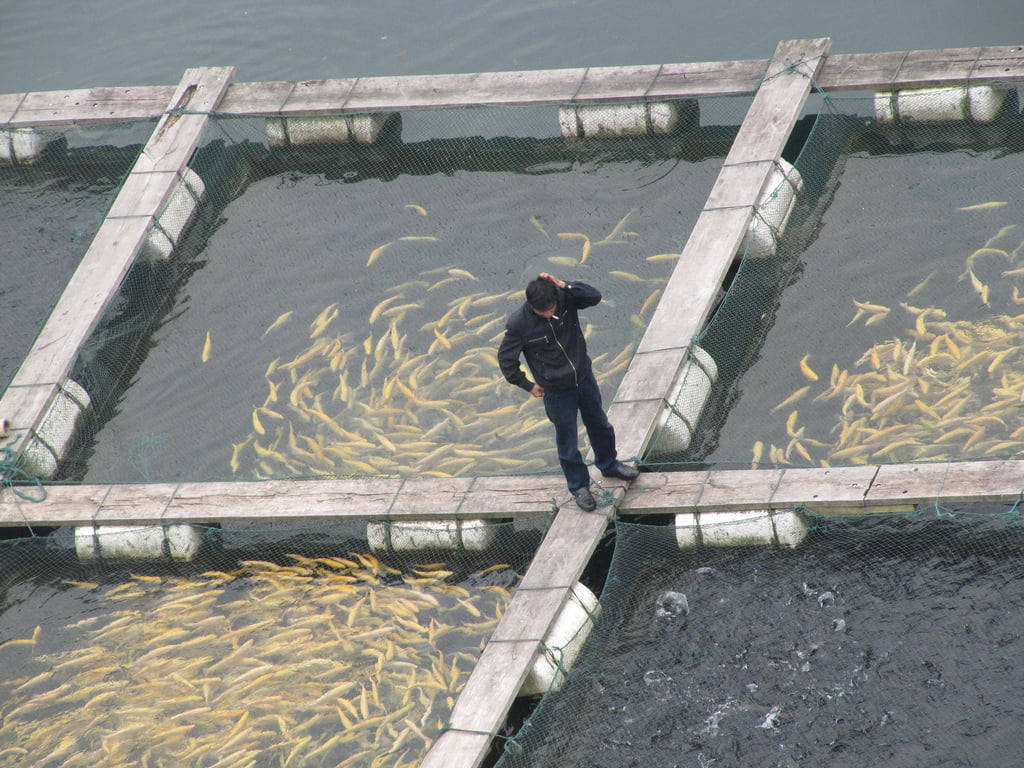“There’s plenty of fish in the sea,” the old saying goes – but that’s not as true as it once was. In fact, says Dotan Bar-Noy, CEO of Israel’s GFA (Grow Fish Anywhere) Advanced Systems, there are fewer fish in the sea with each passing year. “Overfishing is a much bigger problem than people realize, and in a few years, many species of salt water fish are simply going to disappear if something isn’t done.”
Bar-Noy and 30 or so others – mostly engineers, marine biologists and other technical folk – have found a solution to the diminishing numbers of fish in the sea. Based on the work of Israeli scientist Dr. Yossi Tal and Hebrew University professor Jaap van Rijn – inventor of the system – GFA has developed an on-land environment where fish can be raised, without having to exchange water or treat it chemically.
“We call this a zero-discharge system,” Bar-Noy says. “We use biological filters and specially developed bacteria to treat the water the fish are growing in, without wasting anything. The system can be set up to raise salt-water fish anywhere in the world – even in the desert, thousands of miles from the ocean,” he asserts.
“As populations grow, more countries are looking to fish as sources of protein, but overfishing threatens to destroy that dream,” says Bar-Noy. “With our system, fish can be grown anywhere – even in the desert – with minimal environmental impact. This is about more than just growing fish,” he adds. “This could help feed millions.”
Fish farms are nothing new. They’ve been around for years, enabling growers to set up controlled environments that can ensure a specific yield of fish, allowing them to guarantee delivery without worrying about dwindling supplies in the ocean, pollution, inclement weather, and other factors that are hard to control.
Still, while they enhance the conservation of fish in the sea, fish farms have problems of their own – mostly due to the need to circulate the water in the pools and tanks where the fish are raised. Most fish farms are located adjacent to a body of water, and their waste-laden water is channeled into the sea, and replaced with “fresh” sea water.
While fish raised in captivity don’t produce an increased amount of waste, at sea it would be dissipated over a much wider area. The fish waste, with its nitrogen and other elements concentrated in a relatively small area, renders the water that it’s dumped into uninhabitable for fish.
As the tanks are generally located near the shore, in relatively shallow water, the wastewater tends to linger there. With the movement of the currents, nearby jurisdictions are liable to find a considerable number of fish floating belly-up in their bays and harbors, having been poisoned by the high concentration of nitrogen and nutrients in the wastewater dumped from the tanks.
This problem is so serious that in some areas fish farms are banned, despite their being perhaps the only technologically feasible solution available to combat overfishing, says Bar-Noy. Alternative purification systems are based on electrical treatment systems which are expensive to install and run, and are not all that effective, he notes. “Even when they work, the electrical purification systems are too expensive, and fish produced with those systems will cost far more than fish from the sea.”
…
To read to the whole story click here
Via www.israel21c.org
Photo by Ivan Walsh
Related posts

Resilient And Nutritious New Plant-Based Milk Aims To Make A Splash

Chocolate From Cultivated Cocoa Comes Without Environmental Toll

Plastic Fantastic: Startup Takes PVC Back To Its Crude Oil Roots




Facebook comments